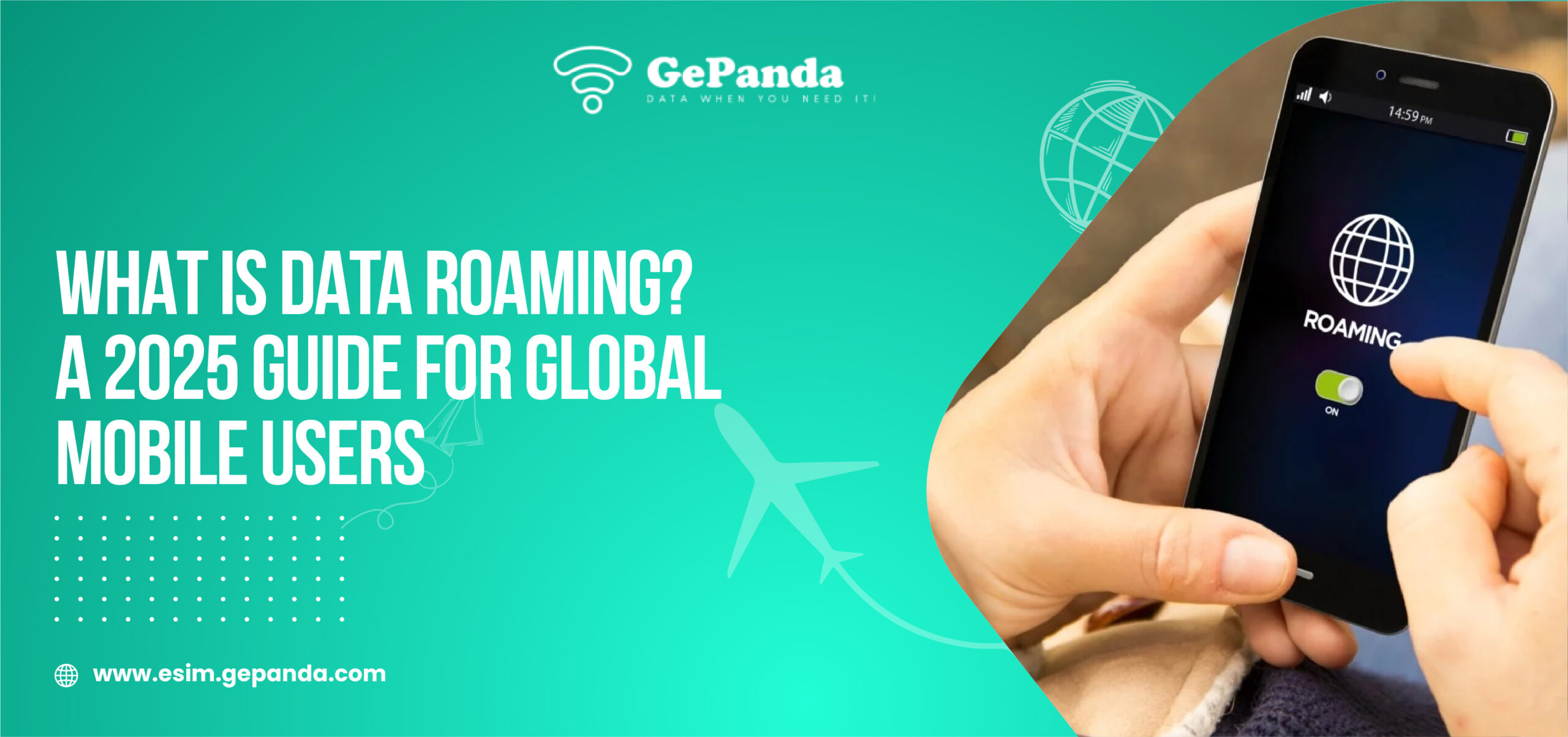There has never been an easy time traveling overseas, but even when you are on the go, staying connected can be confusing and costly. Data roaming is a term you will encounter in your phone settings and mobile bills, whether you are traveling for business, on a family holiday, or on a long-term international assignment. Intimidating as it may seem, you must know how to roam through data without falling prey to expensive surprises and remain connected when you are out of town.
Here, we will deconstruct the definition of data roaming in 2025, its functionality, and how it can be smarter with newer ways of connectivity, such as the eSIM technology that is making connectivity to any location around the world simple and less expensive than ever before.
What Is Data Roaming?
Data roaming is a situation where you use your mobile phone to have internet connectivity beyond the coverage of your home network. As you cross your borders, your carrier collaborates with a foreign network that maintains your connectivity. This enables you to use applications, access the Internet, and remain connected online without swapping your SIM card.
Simply put, roaming is what allows your smartphone to continue communicating with a network, even in areas where your carrier’s signal is not available. Your phone automatically goes to a partner network, and you keep using your phone normally. But this convenience is not always free from roaming charges.
How Data Roaming Works
When you are at home, your phone links straight to your carrier network. When you cross borders, you are served by your carrier, which borrows another provider network to do the service. This is smooth and does not involve anything on your part. But in the background, your carrier compensates the foreign network to carry your traffic, and these fees are billed back to you, in many cases at a high rate.
That is why some travelers are appalled by homecoming phone bills. Roaming rates may include:
- Per-megabyte (MB) or per-gigabyte (GB) data charges
- Extra fees for making and receiving calls
- SMS and multimedia messaging fees
Roaming is convenient because you don’t need to switch SIM cards or settings; however, it’s not always the most affordable option, especially for frequent travelers or heavy data users.
Want to avoid expensive roaming charges on your next trip? Explore affordable eSIM plans for your destination
Why Data Roaming Costs Are So High
Despite enhanced mobile technology, the cost of roaming is still high due to the way in which the carriers organize the international agreements. Your carrier agrees to a charge with a foreign network to provide access to your phone. The burden of that expense passes to you.
Moreover, not all areas have as many network partners, so the competition is less and the prices are higher. Although some carriers currently have programs that provide a global plan, such plans can be costly or limited in coverage. This is one of the reasons why other options, such as eSIMs and local SIM cards, have become increasingly popular among travelers seeking to stay connected without incurring exorbitant prices.
The Rise of eSIM Technology
The eSIM technology has revolutionized the way people are using mobile connectivity in 2025. An eSIM (embedded SIM) is a digital activation and is embedded inside your phone unlike a physical SIM card. That is, you do not have to change the carrier or buy a travel data plan by changing the SIM card or even going to a store.
This process is simplified with other platforms such as GePanda, which provides cheap eSIM plans to dozens of countries and regions. Travelers can:
- Purchase a prepaid data plan online.
- Scan a QR code sent to their email.
- Instantly activate connectivity on arrival.
This shift makes traditional roaming less necessary and provides global travelers with better transparency, control, and cost savings.
Data Roaming in 2025: Smarter, But Still Risky
Carriers have gone ahead to enhance the roaming experience. Others provide day passes, international packages, or infinite global packages that limit expenses. The other ones give you the option of using your home plan in a foreign country at a daily rate. Nevertheless, the alternatives are commonly costlier than purchasing a local or regional eSIM package, particularly when visiting long distances.
Unless you have a plan and leave your phone roaming, you may inadvertently consume background data (such as app updates or location services) without even realizing it. This may end up costing hundreds of dollars in charges to do things as basic as scrolling social media or getting directions through GPS.
Final Thoughts
Data roaming has been a valuable feature for decades, but it’s not always the most sensible or cost-effective choice in 2025. While carriers have introduced new roaming packages to simplify travel, high costs and complicated billing remain a challenge for global mobile users.
For modern travelers, eSIM technology provides a more convenient and efficient way forward. With prepaid data plans, instant activation, and transparent pricing, platforms like GePanda help you take control of your connectivity. Whether you’re working remotely, exploring a new city, or simply staying in touch with loved ones, you’ll have reliable internet access without the stress of surprise charges.
If you’re planning your next international trip, skip the roaming worries and switch to a GePanda eSIM for a smarter, hassle-free travel experience.
Skip the SIM swap and long queues. Activate your eSIM in minutes and enjoy instant mobile data wherever you land.




